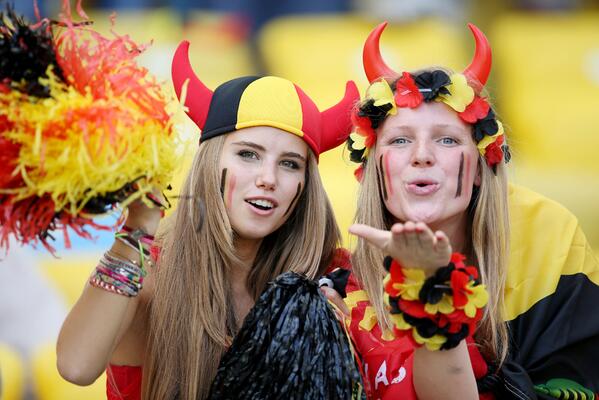The vast majority of the Catholic population in the Netherlands is now largely irreligious in practice. Research among self-identified Catholics in the Netherlands, revealed in 2007, shows that only 27% of the Dutch Catholics could be thought to be a theist, 55% as an ietsist, deist or agnostic and 17% as atheist. In 2015 solely thirteen% of self-identified Dutch Catholics imagine within the existence of heaven, 17% in a private God and fewer than half believe that Jesus was the Son of God or despatched by God.
Most Catholics reside within the southern provinces of North Brabant and Limburg, the place they comprise a majority of the population in the diocese of Roermond in the province of Limburg, based on self reported info by the Catholic Church. Currently, Roman Catholicism is the one largest faith of the Netherlands, forming some 23.7% of the Dutch people in 2015, down from forty% in the 1960s.
Women’s Cellphone Use (%)
Christians comprised forty three.eight% of the total inhabitants and had been divided between Catholics with 23.7% and the members of the Protestant Church of the Netherlands with 15.5%, members of different Christian denominations have been the four.6%. Islam comprised four.9% of the whole population, Hinduism 0.6%, Buddhism zero.4% and Judaism zero.1%. – by way of Belgian Federal Government Service (ministry) of Economy – Directorate–basic Statistics Belgium. Sinte Romani is spoken by many among the many 10,000 Romani or Sinti dwelling in Belgium.
According to the church itself, formal membership was 22.4% of the Dutch inhabitants in 2016. In 2015, Statistics Netherlands, the Dutch government institute that gathers statistical details belgian women about the Netherlands, found that fifty.1% of the adult population declared to be not non secular.
Belgium: €30,000 Reward Offered After Presumed Wolf Death
Also all official correspondence and communication with the federal government (e.g. tax papers, native politics, ID/passport requests, building permits and so on.) must be within the official language of the area or community. Inhabitants of some municipalities are granted an exception to those guidelines. In nationwide politics, politicians can freely select to speak in any of the three official languages.
Flanders

Although linguists prefer the time period ‘Netherlandic’, Dutch and Flemish remain common terms as a result of they have political and cultural that means. This is especially true of local spoken dialects, which form a gradual chain via Dutch-Flemish territory. Belgium is famed for its top quality chocolate and over 2,000 chocolatiers, each small and huge. Belgium’s association with chocolate goes back so far as 1635 when the country was underneath Spanish occupation. By the mid-18th century, chocolate had turn out to be extremely popular in higher and center class circles, particularly in the form of hot chocolate, including with Charles-Alexander of Lorraine, the Austrian governor of the territory.
For instance, Urk, thought-about by many as one of the conventional communities in the country, and some municipalities of Friesland have characteristics typical of the Bible Belt. Other places on this space are Yerseke, Tholen, Ouddorp, Opheusden, Kesteren, Barneveld, Nunspeet, Elspeet and Staphorst. The three greatest cities regarded to be part of the Bible Belt are Ede, Veenendaal and Kampen. Since the provinces North Brabant and Limburg are within the Netherlands traditionally largely Roman Catholic, a few of their individuals nonetheless use the name a foundation for their cultural identification somewhat than as a spiritual identity. A planned visit of Pope Francis to the Netherlands was blocked by cardinal Wim Eijk in 2014, allegedly because of the scary lack of curiosity within the Pope among the many Dutch public.
Tornado Brussels And Strijtem Are The Belgium Champions For 2018
It has significant German influence and isn’t mutually intelligible with other Romani languages. The language and people are often known as “Gypsies” by outsiders, a term thought of to be pejorative due to its connotations of illegality and irregularity. Yiddish is spoken by many among the 20,000 Ashkenazi Jews residing in Antwerp. Luxembourgish, a Moselle Franconian language, is native to Arelerland, the japanese part of the Belgian province of Luxembourg, including town of Arlon (Arel). Since the late 20th century, it has largely been changed by Belgian French in current decades, in distinction to its flourishing on the other side of the border, within the Grand Duchy of Luxembourg.
In flip, the Belgian parliament offers simultaneous interpretation for many who require it to assist in communication. Before the federal construction and the language legislation were progressively introduced within the later twentieth century, French was typically the one language utilized by public authorities. For example, the Dutch model of the Constitution has loved equal status to the original French one only since 1967, and the German version since 1991.

Low Dietsch is a Germanic language or dialect in the north-east of the Belgian province of Liege, within the kernel area of the historical (and linguistically blended) Duchy of Limburg. It is spoken in towns and villages such as Plombières (Bleiberg), Gemmenich, Hombourg, Montzen and Welkenraedt. Linguists classify this dialect as a transition between Limburgish and Ripuarian. Like the other indigenous languages carefully associated to French, Lorrain was recognized in 1990.
